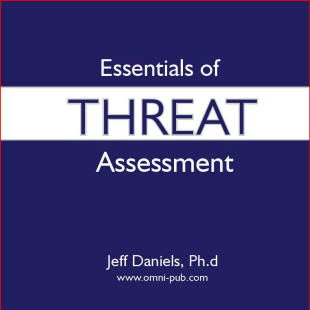The Essentials of Threat Assessment

Los Angeles Schools made one assessment.
NY City Schools made a different assessment.
Why?
NY City Schools made a different assessment.
Why?
In this DVD, Jeff Daniels, Ph.D., a professor at Indiana University Bloomington, Dept. of Counseling and Educational Psychology, presents the latest information available on making accurate threat assessments. Professor Daniels — who has participated in a School Violence Conference at the White House and is recognized for his expertise nationally — has long worked with the F.B.I. in developing and refining threat assessment practices for schools.
Highlights of the DVD include:
- Case Studies
- Types of Threats
- Direct
- Indirect
- Veiled
- Conditional
- Threat Assessment
- How credible and serious?
- Are there specific details?
- Are details plausible?
- What are the resources, intent and motivation?
- What is the emotional content?
- Motivation
- To taunt
- To frighten
- To gain status
- To strike back
- Levels of Risk
- Low Level – a threat that poses minimal risk to the victim and public safety.
- Threat is vague and indirect
- Information contained within the threat is inconsistent, implausible or lacks detail.
- Threat lacks realism.
- Content of the threat suggests person is unlikely to carry it out.
- Medium Level – a threat that could be carried out, although it may not appear entirely realistic.
- Threat is more direct and more concrete than a low level threat.
- Wording in the threat suggests the threatener has given some thought to how the act will be carried out.
- There may be a general indication of a possible place and time (though these signs still fall well short of a detailed plan).
- There is no strong indication that the threatener has taken preparatory steps, although there may be some veiled reference or ambiguous or inconclusive evidence pointing to that possibility.
- There may be a specific statement seeking to convey that the threat is not empty: serious!
- High Level – a threat that appears to pose an imminent and serious danger to the safety of others.
- Threat is direct, specific and plausible.
- Threat suggests concrete steps have been taken toward carrying it out. For example, statements indicating that the threatener has acquired or practiced with a weapon or has had the victim under surveillance.
- Low Level – a threat that poses minimal risk to the victim and public safety.
- Recommendations
- Develop a Threat Assessment Team
- Principal or Assistant Principal
- School Resource Officer
- School Counselor, Psychologist, & Social Worker
- Establish close working relationships with local law enforcement agencies.
- Obtain training in threat assessment.
- Develop a set of Threat Assessment Procedures.
- Implement safety plan.
- Develop a Threat Assessment Team
DVD Price: $90.00
Click here to order with a purchase order online.
Click here for a printable version (pdf) to fax your order.
or click below to order using a credit card.